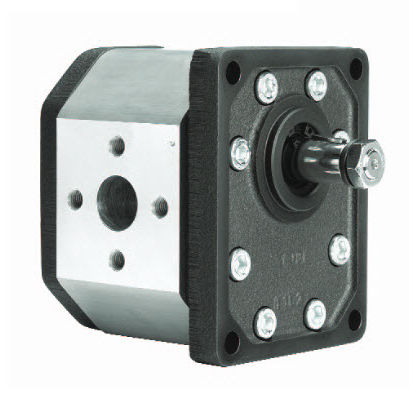This chapter describes Marzocchi GHP serie in their single version, their operating features and how to select the right pump for the required application. The pumps are hydraulic machines converting mechanical power into hydraulic power. This section deals with rotary positive-displacement pumps. In this type of pump, a given volume of fluid flows from inlet to outlet at each shaft rotation (theoretical displacement). Pressure depends on deliver y line resistance to fluid flow. As gear pumps only transfer fluid, they are subject to pressure generated by the circuit. Therefore, if system flow rate and motor rotation speed are known, it is easy to select the right pump displacement and its model. The diagram indicating flow rate variations according to speed and pressure, shows that not all the theoretically available fluid is transferred from inlet to outlet because of pump internal dripping. Dripping can be remarkably reduced through pressure axial compensating systems (as described at the beginning of this catalogue) but never eliminated. Dripping increases as circuit pressure increases. A pump requires energy, just like any other hydraulic machine. Part of this power is given to the fluid to increase pressure required by the cir cuit, the r emaining part is used to win pump internal friction. Therefore, for proper pump operation, supplied torque shall be higher than theoretical torque. The following diagrams show , for each single displacement, the typical required power as a function of rotation speed and pressure generated by the system and allow you to easily spot the pr oduct suitable for your application.




